The “Screen Classics” series published by the University Press of Kentucky continues to amaze, entertain and dazzle us. TK new books for 2017:
♥ Harry Langdon: King of Silent Comedy ($40) Among silent film comedians, three names stand out―Charlie Chaplin, Buster Keaton, and Harold Lloyd―but Langdon indisputably deserves to sit among them as the fourth “king.”  Langdon parlayed his pantomime talents, expressive eyes and childlike innocence into silent-era stardom. This in-depth biography, which features behind-the-scenes accounts and personal recollections compiled by Langdon’s late wife, Mabel, provides a full and thoughtful picture of this multifaceted entertainer and his meteoric rise and fall. Featuring never-before-published stories and photos from his immediate family, this biography is a fascinating and revealing look at an unsung silent film giant.
Langdon parlayed his pantomime talents, expressive eyes and childlike innocence into silent-era stardom. This in-depth biography, which features behind-the-scenes accounts and personal recollections compiled by Langdon’s late wife, Mabel, provides a full and thoughtful picture of this multifaceted entertainer and his meteoric rise and fall. Featuring never-before-published stories and photos from his immediate family, this biography is a fascinating and revealing look at an unsung silent film giant.
♥ He’s Got Rhythm: The Life and Career of Gene Kelly ($39.95) A would-be baseball player and one-time law student, Kelly captured the nation’s imagination in so many great flicks. In the first written since the star’s death, authors Cynthia Brideson and Sara Brideson disclose new details of Kelly’s complex life. 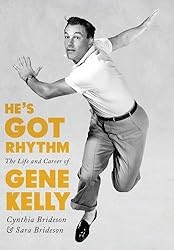 Not only do they examine his contributions to the world of entertainment in depth, but they also consider his political activities―including his opposition to the Hollywood blacklist. The authors even confront Kelly’s darker side and explore his notorious competitive streak, his tendency to be a taskmaster on set and his multiple marriages.
Not only do they examine his contributions to the world of entertainment in depth, but they also consider his political activities―including his opposition to the Hollywood blacklist. The authors even confront Kelly’s darker side and explore his notorious competitive streak, his tendency to be a taskmaster on set and his multiple marriages.
♥ Anne Bancroft: A Life ($34.95) In the first biography to cover the entire scope of Bancroft’s life and career, Douglass K. Daniel brings together interviews with dozens of her friends and colleagues, never-before-published family photos, and material from film and theater archives to present a portrait of an artist who raised the standards of acting for all those who followed.  Daniel reveals how, from a young age, Bancroft was committed to challenging herself and strengthening her craft. The book offers new insights into the life and career of a determined actress who left an indelible mark on the film industry while remaining true to her art.
Daniel reveals how, from a young age, Bancroft was committed to challenging herself and strengthening her craft. The book offers new insights into the life and career of a determined actress who left an indelible mark on the film industry while remaining true to her art.
♥ Barbara La Marr: The Girl Who Was Too Beautiful for Hollywood ($45) . When she was 17, La Marr’s behavior in Los Angeles nightclubs caused law enforcement to declare her “too beautiful” to be on her own in the city, and she was ordered to leave. When La Marr returned to Hollywood years later, her loveliness and raw talent caught the attention of producers and catapulted her to movie stardom. In five years, La Marr appeared in twenty-six films, yet by 1925―finding herself beset by numerous scandals, several failed marriages, a hidden pregnancy and personal prejudice based on her onscreen persona―she fell out of public favor. When she was diagnosed with a fatal lung condition, she continued to work, undeterred, until she collapsed on set. She died at the age of 29. Drawing on never-before-released diary entries, correspondence, and creative works, Sherri Snyder’s biography offers a valuable perspective on her contributions to silent-era Hollywood and the cinematic arts.
When she was diagnosed with a fatal lung condition, she continued to work, undeterred, until she collapsed on set. She died at the age of 29. Drawing on never-before-released diary entries, correspondence, and creative works, Sherri Snyder’s biography offers a valuable perspective on her contributions to silent-era Hollywood and the cinematic arts.
♥ You Ain’t Heard Nothin’ Yet: Interviews with Stars from Hollywood’s Golden Era ($36.95) Journalists James Bawden and Ron Miller spent their careers interviewing the greatest stars of Hollywood’s golden age. They visited Lee Marvin at home and politely admired his fishing trophies, chatted with Janet Leigh while a young Jamie Lee Curtis played, even made Elizabeth Taylor laugh out loud in a seven-minute chat. The book is filled with humorous anecdotes and incredible behind-the-scenes stories.  Bette Davis reflects that she and Katharine Hepburn were both considered for the role of Scarlett O’Hara but neither was “gorgeous enough” for the part; Janet Leigh analyzes the famous shower scene in Psycho, which was shot in seven days and gave the actress nightmares for years; and Jimmy Stewart describes Alfred Hitchcock as a “strange, roly-poly man, interested only in blondes and murder.”
Bette Davis reflects that she and Katharine Hepburn were both considered for the role of Scarlett O’Hara but neither was “gorgeous enough” for the part; Janet Leigh analyzes the famous shower scene in Psycho, which was shot in seven days and gave the actress nightmares for years; and Jimmy Stewart describes Alfred Hitchcock as a “strange, roly-poly man, interested only in blondes and murder.”
We have always been a fan of Julia Child. We are in love with France is a Feast (Thames & Hudson, $35), a volume of 250 intimate and compelling photographs taken by her husband Paul Child, a gifted photographer, that documents how Julia Child first discovered French cooking and the French way of life. Their wanderings through the French capital and countryside, frequently photographed by Paul, would help lead to the classic Mastering the Art of French Cooking, and Julia’s celebrated career in books and on television. 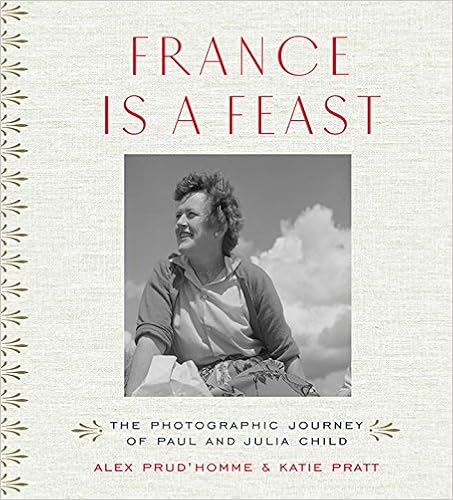 Though Paul was an accomplished photographer (his work is in the collection of the Museum of Modern Art), his photographs remained out of the public eye until the publication of Julia’s memoir, My Life in France, in which several of his images were included. Now, with these photos and personal stories recounted by his great-nephew Alex Prud’homme, France is a Feast not only captures this magical period in Paul and Julia’s lives, but also brings to light Paul Child’s own remarkable photographic achievement. Merveilleux!
Though Paul was an accomplished photographer (his work is in the collection of the Museum of Modern Art), his photographs remained out of the public eye until the publication of Julia’s memoir, My Life in France, in which several of his images were included. Now, with these photos and personal stories recounted by his great-nephew Alex Prud’homme, France is a Feast not only captures this magical period in Paul and Julia’s lives, but also brings to light Paul Child’s own remarkable photographic achievement. Merveilleux!
Tina Brown kept delicious daily diaries throughout her eight spectacular years as editor-in-chief of Vanity Fair. The pithy memoir-filled The Vanity Fair Diaries: 1983-1992 (Henry Holt, $32) offer an incendiary portrait of the flash and dash and power brokering of the Excessive Eighties in New York and Hollywood. She was a woman of relentless drive and ambition; with a mere swipe of her pens (or compUter keys), she can stab the knife and twist it.  Here are the inside stories of Vanity Fair scoops and covers that sold millions―the Reagan kiss, the meltdown of Princess Diana’s marriage to Prince Charles, the sensational Annie Leibovitz cover of a gloriously pregnant, naked Demi Moore. They are as acerbic as they are astute, even mean-spirited. Who else can recall mega-agent Swifty Lazar as “tiny and bald and hairy in the wrong places”? Or socialite Betsy Bloomingdale as someone who “has the wind-tunnel look of a recent face-lift”? Diss-light!
Here are the inside stories of Vanity Fair scoops and covers that sold millions―the Reagan kiss, the meltdown of Princess Diana’s marriage to Prince Charles, the sensational Annie Leibovitz cover of a gloriously pregnant, naked Demi Moore. They are as acerbic as they are astute, even mean-spirited. Who else can recall mega-agent Swifty Lazar as “tiny and bald and hairy in the wrong places”? Or socialite Betsy Bloomingdale as someone who “has the wind-tunnel look of a recent face-lift”? Diss-light!
In the early 1930s, during the worst drought and financial depression in American history, Sam Babb recruited talented, hardworking young women and offered them a chance at a better life: A free college education in exchange for playing on his basketball team, the Cardinals. Despite their fears of leaving home and the sacrifices that their families would face, the women joined the team. And as Babb coached the Cardinals, something extraordinary happened. These remarkable athletes found a passion for the game and a heartfelt loyalty to one another and their coach. And they began to win. Dust Bowl Girls: The Inspiring Story of the Team That Barnstormed Its Way to Basketball Glory (Algonquin Books, $16.95) takes readers on the Cardinals’ intense, improbable journey all the way to an epic showdown with the prevailing national champions, helmed by the legendary Babe Didrikson.
These remarkable athletes found a passion for the game and a heartfelt loyalty to one another and their coach. And they began to win. Dust Bowl Girls: The Inspiring Story of the Team That Barnstormed Its Way to Basketball Glory (Algonquin Books, $16.95) takes readers on the Cardinals’ intense, improbable journey all the way to an epic showdown with the prevailing national champions, helmed by the legendary Babe Didrikson.
Those who knew Sid Luft, the producer and third husband of Judy Garland, knew he was an ego maniac who emotional abused his wife. In Judy and I: My Life With Judy Garland ( Chicago review Press, $30), he proves he has no filter when it comes to talking about women: Judy’s mother is “fat and dumpy”; Judy’s sisters are “ugly”; and Judy was a “helium head” since her face was so fat. because her face was so fat. Yet he produced A Star is Born and fought to keep her sober and drug-free. We enjoyed the book, even if he doesn’t get into their marriage until half-way through the pages. There are nice touches (she didn’t use nail polish) and Judy fans will relish the book. Maybe.
Chicago review Press, $30), he proves he has no filter when it comes to talking about women: Judy’s mother is “fat and dumpy”; Judy’s sisters are “ugly”; and Judy was a “helium head” since her face was so fat. because her face was so fat. Yet he produced A Star is Born and fought to keep her sober and drug-free. We enjoyed the book, even if he doesn’t get into their marriage until half-way through the pages. There are nice touches (she didn’t use nail polish) and Judy fans will relish the book. Maybe.
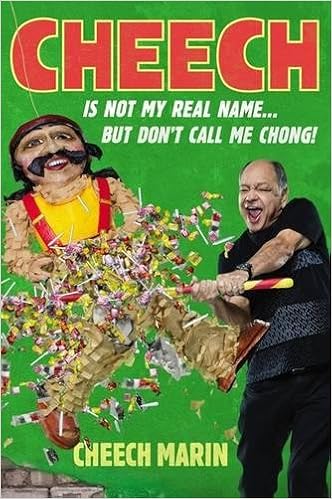 became the face of the recreational drug movement with the film Up in Smoke, forged a successful solo career with roles in The Lion King and, more recently, Jane the Virgin, and became the owner of the most renowned collection of Chicano art in the world. Written in Cheech’s uniquely hilarious voice, this memoir (do we dare?) will take you to new highs
became the face of the recreational drug movement with the film Up in Smoke, forged a successful solo career with roles in The Lion King and, more recently, Jane the Virgin, and became the owner of the most renowned collection of Chicano art in the world. Written in Cheech’s uniquely hilarious voice, this memoir (do we dare?) will take you to new highsIn a career spanning more than 30 years, David Letterman redefined the modern talk show with an ironic comic style that transcended traditional television. While he remains one of the most famous stars in America, he is a remote, even reclusive, figure whose career is widely misunderstood. In Letterman: The Last Giant of Late Night (Harper, $28.99), Jason Zinoman, the first comedy critic in the history of the New York Times, mixes groundbreaking reporting with unprecedented access and probing critical analysis to explain the unique entertainer’s titanic legacy.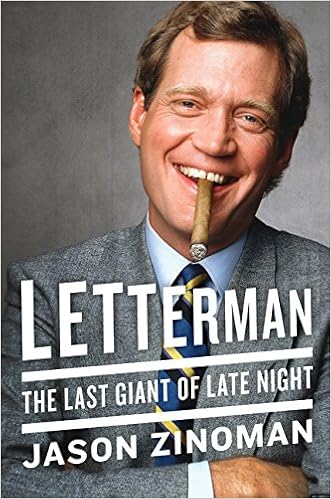 Moving from his early days in Indiana to his retirement, Zinoman goes behind the scenes of Letterman’s television career to illuminate the origins of his revolutionary comedy, its overlooked influences, and how his work intersects with and reveals his famously eccentric personality.
Moving from his early days in Indiana to his retirement, Zinoman goes behind the scenes of Letterman’s television career to illuminate the origins of his revolutionary comedy, its overlooked influences, and how his work intersects with and reveals his famously eccentric personality.
In the wake of rape allegations made against director and actor Nate Parker, Gabrielle Union—a 44-year-old actress who launched her career with roles in iconic ’90s movies—instantly became the insightful, outspoken actress that Hollywood has been desperately awaiting. With honesty and heartbreaking wisdom, she revealed her own trauma as a victim of sexual assault: “It is for you that I am speaking. This is real. We are real.” ![We're Going to Need More Wine: Stories That Are Funny, Complicated, and True by [Union, Gabrielle]](https://images-na.ssl-images-amazon.com/images/I/51SM2a8-miL.jpg) We’re Going to Need More Wine: Stories That Are Funny, Complicated and True (Dey Street Books, $26.99) is a collection of thought-provoking essays infused with her unique wisdom and deep humor; Union uses that same fearlessness to tell astonishingly personal and true stories about power, color, gender, feminism and fame as she bravely lays herself bare.
We’re Going to Need More Wine: Stories That Are Funny, Complicated and True (Dey Street Books, $26.99) is a collection of thought-provoking essays infused with her unique wisdom and deep humor; Union uses that same fearlessness to tell astonishingly personal and true stories about power, color, gender, feminism and fame as she bravely lays herself bare.
We hate him. So does most of America. So does Katy Tur. Called “disgraceful,” “third-rate,” and “not nice” by Arnold Frump, the NBC News correspondent reported on—and took flak from—the most captivating and volatile presidential candidate in American history. She lived out of a suitcase for a year and a half, following Frump around the country, powered by packets of peanut butter and kept clean with dry shampoo. She visited 40 states with the candidate, made more than 3,800 live television reports, and tried to endure a gazillion loops of Elton John’s “Tiny Dancer”—a Frump rally playlist staple. From day 1 to day 500, Tur documented Trump’s inconsistencies, fact-checked his falsities and called him out on his lies. In return, Trump repeatedly singled Tur out. He tried to charm her, intimidate her and shame her. At one point, he got a crowd so riled up against Tur, Secret Service agents had to walk her to her car. None of it worked. Facts are stubborn. So was Tur. She was part of the first women-led politics team in the history of network news. Unbelievable: My Front-Row Seat to the Craziest Campaign in American History (Dey Street Books, $26.99) is her darkly comic, fascinatingly bizarre, and often scary story of how America sent a former reality show host to the White House. It’s also the story of what it was like for Tur to be there as it happened, inside a no-rules world where reporters were spat on, demeaned and discredited. Impeach the asshole NOW.
In return, Trump repeatedly singled Tur out. He tried to charm her, intimidate her and shame her. At one point, he got a crowd so riled up against Tur, Secret Service agents had to walk her to her car. None of it worked. Facts are stubborn. So was Tur. She was part of the first women-led politics team in the history of network news. Unbelievable: My Front-Row Seat to the Craziest Campaign in American History (Dey Street Books, $26.99) is her darkly comic, fascinatingly bizarre, and often scary story of how America sent a former reality show host to the White House. It’s also the story of what it was like for Tur to be there as it happened, inside a no-rules world where reporters were spat on, demeaned and discredited. Impeach the asshole NOW.
In November of 1954 a young woman dressed plainly in a white oxford, dark sunglasses and a black pageboy wig boards a midnight flight from Los Angeles to New York. As the plane’s engines rev she breathes a sigh of relief, lights a cigarette and slips off her wig revealing a tangle of fluffy blonde curls. Marilyn Monroe was leaving Hollywood behind, and along with it a failed marriage and a frustrating career. She needed a break from the scrutiny and insanity of LA. She needed Manhattan. In Manhattan, the most famous woman in the world can wander the streets unbothered, spend hours at the Met getting lost in art, and afternoons buried in the stacks of the Strand.  Marilyn begins to live a life of the mind in New York; she dates Arthur Miller, dances with Truman Capote and drinks with Carson McCullers. Even though she had never lived there before, in New York, Marilyn is home. A true love letter to Marilyn, and a joyous portrait of a city bursting with life and art, Marilyn in Manhattan: Her Year of Joy (Flatiron Books, $27.99) is a lively look at two American treasures: New York and Marilyn Monroe, and sheds new light on one of our most enduring icons.
Marilyn begins to live a life of the mind in New York; she dates Arthur Miller, dances with Truman Capote and drinks with Carson McCullers. Even though she had never lived there before, in New York, Marilyn is home. A true love letter to Marilyn, and a joyous portrait of a city bursting with life and art, Marilyn in Manhattan: Her Year of Joy (Flatiron Books, $27.99) is a lively look at two American treasures: New York and Marilyn Monroe, and sheds new light on one of our most enduring icons.
Bunny Mellon, who died in 2014 at age 103, was press-shy during her lifetime. But with the co-operation of Bunny Mellon’s family, author Meryl Gordon received access to thousands of pages of her letters, diaries and appointment calendars and has interviewed more than 175 people to capture the spirit of this talented American original in Bunny Mellon: The Life of an American Style Legend (Grand Central Publishing, $28).  Whoever knew the life story of a style icon and American aristocrat who designed the White House Rose Garden for her friend JFK and served as a living witness to 20th Century American history could be so riveting?
Whoever knew the life story of a style icon and American aristocrat who designed the White House Rose Garden for her friend JFK and served as a living witness to 20th Century American history could be so riveting?
Fred Hersch’s prodigious talent as a sideman—a pianist who played with the giants of the twentieth century in the autumn of their careers, including Art Farmer and Joe Henderson—blossomed further in the ’80s and beyond into a compositional genius that defied the boundaries of bop, sweeping in elements of pop, classical, and folk to create a wholly new music. Good Things Happen Slowly: A Life in and Out of Jazz (Crown Archetype , $28) is his memoir. It’s the story of the first openly gay, HIV-positive jazz player; a deep look into the cloistered jazz culture that made such a status both transgressive and groundbreaking; and a profound exploration of how Hersch’s two-month-long coma in 2007 led to his creating some of the finest, most direct, and most emotionally compelling music of his career.
Good Things Happen Slowly: A Life in and Out of Jazz (Crown Archetype , $28) is his memoir. It’s the story of the first openly gay, HIV-positive jazz player; a deep look into the cloistered jazz culture that made such a status both transgressive and groundbreaking; and a profound exploration of how Hersch’s two-month-long coma in 2007 led to his creating some of the finest, most direct, and most emotionally compelling music of his career.
Millions of readers of Little House on the Prairie believe they know Laura Ingalls―the pioneer girl who survived blizzards and near-starvation on the Great Plains, and the woman who wrote the famous autobiographical books. But the true saga of her life has never been fully told. Now, drawing on unpublished manuscripts, letters, diaries, and land and financial records, Caroline Fraser masterfully fills in the gaps in Prairie Fires: The American Dreams of Laura Ingalls Wilder (Metropolitan Books, $35) Wilder’s biography. Revealing the grown-up story behind the most influential childhood epic of pioneer life, she also chronicles Wilder’s tumultuous relationship with her journalist daughter, Rose Wilder Lane, setting the record straight regarding charges of ghostwriting that have swirled around the books.
Wilder’s biography. Revealing the grown-up story behind the most influential childhood epic of pioneer life, she also chronicles Wilder’s tumultuous relationship with her journalist daughter, Rose Wilder Lane, setting the record straight regarding charges of ghostwriting that have swirled around the books.
A perfect companion: In Caroline: Little House, Revisited (William Morrow, $25.99), Sarah Miller vividly recreates the beauty, hardship and joys of the frontier in a dazzling work of historical fiction that was authorized by Little House Heritage Trust. It’s a captivating story that illuminates one courageous, resilient and loving pioneer woman as never before:  Caroline Ingalls, “Ma” in Laura Ingalls Wilder’s beloved Little House books. For more than eighty years, generations of readers have been enchanted by the adventures of the American frontier’s most famous child, Laura Ingalls Wilder, in the Little House books. Now, that familiar story is retold in this captivating tale of family, fidelity, hardship, love, and survival that vividly reimagines our past.
Caroline Ingalls, “Ma” in Laura Ingalls Wilder’s beloved Little House books. For more than eighty years, generations of readers have been enchanted by the adventures of the American frontier’s most famous child, Laura Ingalls Wilder, in the Little House books. Now, that familiar story is retold in this captivating tale of family, fidelity, hardship, love, and survival that vividly reimagines our past.
4 from university

 There is so much about Charlie’s life in this book that it would and could make a great movie, or even better, a long-running series . . . very informative and interesting. We all love Charlie, me more than most. Enjoy the book. I did.”
There is so much about Charlie’s life in this book that it would and could make a great movie, or even better, a long-running series . . . very informative and interesting. We all love Charlie, me more than most. Enjoy the book. I did.” It details the many themes he discussed, the authors he defended, the myths he castigated, the polemics that made him famous and his acute ear for the languages of his day. This biography enables the reader to enter into Barthes’s life and grasp the shape of his existence, and thus understand the kind of writer he became and how he turned literature into life itself.
It details the many themes he discussed, the authors he defended, the myths he castigated, the polemics that made him famous and his acute ear for the languages of his day. This biography enables the reader to enter into Barthes’s life and grasp the shape of his existence, and thus understand the kind of writer he became and how he turned literature into life itself. There’s John L. Sullivan, who made the heavyweight championship a commercial property; Jack Johnson, who became the first black man to claim the title; Jack Dempsey, a sporting symbol of the Roaring Twenties; Joe Louis, whose contributions to racial tolerance and social progress transcended even his greatness in the ring; Rocky Marciano, who became an embodiment of the American Dream; Muhammad Ali, who took on the U.S. government and revolutionized professional sports with his showmanship; and Mike Tyson, a hard-punching dynamo who typified the modern celebrity. A knock out!
There’s John L. Sullivan, who made the heavyweight championship a commercial property; Jack Johnson, who became the first black man to claim the title; Jack Dempsey, a sporting symbol of the Roaring Twenties; Joe Louis, whose contributions to racial tolerance and social progress transcended even his greatness in the ring; Rocky Marciano, who became an embodiment of the American Dream; Muhammad Ali, who took on the U.S. government and revolutionized professional sports with his showmanship; and Mike Tyson, a hard-punching dynamo who typified the modern celebrity. A knock out!  Another tome to make book ends: Mad Dog: The Maurice Vachon Story (ECW, $19,95), that explores Vachon’s career and personal struggles with painstakingly detailed historical research and through both Maurice’s own recollections and those of the people who knew him best.
Another tome to make book ends: Mad Dog: The Maurice Vachon Story (ECW, $19,95), that explores Vachon’s career and personal struggles with painstakingly detailed historical research and through both Maurice’s own recollections and those of the people who knew him best. He also explores his own personal relationship to the character: Just as we encounter one Anna Karenina or Jay Gatsby when we are in high school and college and another when we are adults, Bloom explains his shifting understanding of Cleopatra over the course of his own lifetime. The book becomes an extraordinarily moving argument for literature as a path to and a measure of our own humanity.
He also explores his own personal relationship to the character: Just as we encounter one Anna Karenina or Jay Gatsby when we are in high school and college and another when we are adults, Bloom explains his shifting understanding of Cleopatra over the course of his own lifetime. The book becomes an extraordinarily moving argument for literature as a path to and a measure of our own humanity. A stirring, action-packed biography,
A stirring, action-packed biography,  engineers who knew Prince best, including members of the Revolution and the Time, Tudahl weaves an intimate saga of an eccentric genius and the people and events who helped shape the groundbreaking music he created. This definitive chronicle of Prince’s creative brilliance during 1983 and 1984 provides a new experience of the Purple Rain album as an integral part of Prince’s life and the lives of those closest to him.
engineers who knew Prince best, including members of the Revolution and the Time, Tudahl weaves an intimate saga of an eccentric genius and the people and events who helped shape the groundbreaking music he created. This definitive chronicle of Prince’s creative brilliance during 1983 and 1984 provides a new experience of the Purple Rain album as an integral part of Prince’s life and the lives of those closest to him. After toiling in the industry for decades, Lee threw caution to the wind and went for broke, co-creating the Fantastic Four, Spider-Man, Hulk, Iron Man, the X-Men, the Avengers, and others in a creative flurry that revolutionized comic books for generations of readers. Marvel superheroes became a central part of pop culture, from collecting comics to innovative merchandising, from superhero action figures to the ever-present Spider-Man lunchbox.
After toiling in the industry for decades, Lee threw caution to the wind and went for broke, co-creating the Fantastic Four, Spider-Man, Hulk, Iron Man, the X-Men, the Avengers, and others in a creative flurry that revolutionized comic books for generations of readers. Marvel superheroes became a central part of pop culture, from collecting comics to innovative merchandising, from superhero action figures to the ever-present Spider-Man lunchbox. He quips: “Perhaps my mother was conceived by a Xerox machine!” Little by Little: People I’ve Known and Been (7th Mind Publishing, $24.95) is a witty, fun read; not so much a detailed autobio, but (as Little says) “a humorous glimpse of he people I’ve impersonated and some of the funny stories that happened along the way.”
He quips: “Perhaps my mother was conceived by a Xerox machine!” Little by Little: People I’ve Known and Been (7th Mind Publishing, $24.95) is a witty, fun read; not so much a detailed autobio, but (as Little says) “a humorous glimpse of he people I’ve impersonated and some of the funny stories that happened along the way.” He shines a light on all the important moments of his life, from his early years and his start in politics to his crucial role as attorney general in his brother’s administration and his tragic run for president. This book brings Bobby Kennedy to life like never before and is destined to become a political classic.
He shines a light on all the important moments of his life, from his early years and his start in politics to his crucial role as attorney general in his brother’s administration and his tragic run for president. This book brings Bobby Kennedy to life like never before and is destined to become a political classic. With more than 40 albums to her credit, Wanda has proven to be an enduring and genre-defying legend of American music. She details her life and career in the wonderful In
With more than 40 albums to her credit, Wanda has proven to be an enduring and genre-defying legend of American music. She details her life and career in the wonderful In ![Reckless Daughter: A Portrait of Joni Mitchell by [Yaffe, David]](https://images-na.ssl-images-amazon.com/images/I/51soJq9sMAL.jpg) From Mitchell’s youth in Canada, her bout with polio at age nine and her early marriage and the child she gave up for adoption, through the love affairs that inspired hits, and up to the present, the bio shows us why Mitchell has so enthralled her listeners, her lovers and her friends. It’s the story of an artist and an era that have left an indelible mark on American music.
From Mitchell’s youth in Canada, her bout with polio at age nine and her early marriage and the child she gave up for adoption, through the love affairs that inspired hits, and up to the present, the bio shows us why Mitchell has so enthralled her listeners, her lovers and her friends. It’s the story of an artist and an era that have left an indelible mark on American music.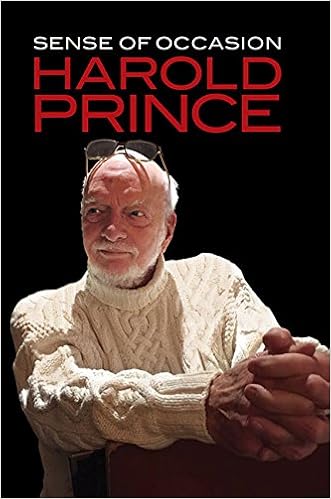 The book gives an insider’s recollection of the making of such landmark musicals as West Side Story, Fiddler on the Roof, Cabaret, Company, Follies, Sweeney Todd, Evita and The Phantom of the Opera, with Prince’s perceptive comments about his mentor George Abbott and his many celebrated collaborators. He also fairly reflects on the shows that didn’t work, most memorably and painfully Merrily We Roll Along. This thoughtful, complete account of one of the most legendary and long-lived careers in theater history, written by the man who lived it, is an essential work of personal and professional recollection.
The book gives an insider’s recollection of the making of such landmark musicals as West Side Story, Fiddler on the Roof, Cabaret, Company, Follies, Sweeney Todd, Evita and The Phantom of the Opera, with Prince’s perceptive comments about his mentor George Abbott and his many celebrated collaborators. He also fairly reflects on the shows that didn’t work, most memorably and painfully Merrily We Roll Along. This thoughtful, complete account of one of the most legendary and long-lived careers in theater history, written by the man who lived it, is an essential work of personal and professional recollection. It’s about time someone gave them hell and explained that progressives can read, too. Go get ’em Mr. Grant!
It’s about time someone gave them hell and explained that progressives can read, too. Go get ’em Mr. Grant! Nobel Prize brought him vindication, and he immediately found himself thrust into the spotlight as a leading academic voice in all matters Dylanological. Today, through his wildly popular Dylan seminar—affectionately dubbed “Dylan 101″—Thomas is introducing a new generation of fans and scholars to the revered bard’s work. This witty, personal volume is a distillation of Thomas’s famous course, and makes a compelling case for moving Dylan out of the Rock & Roll Hall of Fame and into the pantheon of Classical poets. You’ll never think about Bob Dylan in the same way again. On October 13, 2016, he the Nobel Prize in Literature, recognizing his countless contributions to music and letters over the last 50 years.
Nobel Prize brought him vindication, and he immediately found himself thrust into the spotlight as a leading academic voice in all matters Dylanological. Today, through his wildly popular Dylan seminar—affectionately dubbed “Dylan 101″—Thomas is introducing a new generation of fans and scholars to the revered bard’s work. This witty, personal volume is a distillation of Thomas’s famous course, and makes a compelling case for moving Dylan out of the Rock & Roll Hall of Fame and into the pantheon of Classical poets. You’ll never think about Bob Dylan in the same way again. On October 13, 2016, he the Nobel Prize in Literature, recognizing his countless contributions to music and letters over the last 50 years.  His acceptance speech is contained in The Nobel Lecture (Simon & Schuster , $16.99), in which Dylan reflects on his life and experience with literature, providing both a rare artistic statement and an intimate look at a uniquely American icon. 100 Songs (Simon & Schuster, $17) is an intimate and carefully curated collection of his most important lyrics that spans from the beginning of his career through the present day.
His acceptance speech is contained in The Nobel Lecture (Simon & Schuster , $16.99), in which Dylan reflects on his life and experience with literature, providing both a rare artistic statement and an intimate look at a uniquely American icon. 100 Songs (Simon & Schuster, $17) is an intimate and carefully curated collection of his most important lyrics that spans from the beginning of his career through the present day. 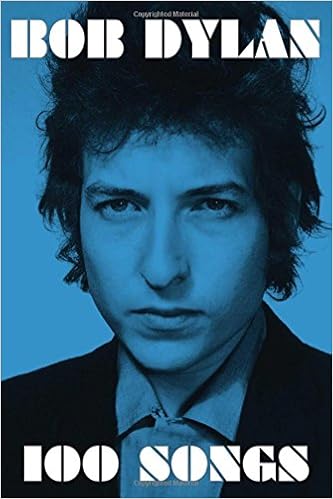 Perfect for students who may be new to Dylan’s work as well as longtime fans, this portable, abridged volume of these singular lyrics explores the depth, breadth and magnitude of one of the world’s most enduring bodies of work. Bob Dylan: The Essential Interviews (Simon & Schuster, $35) features more than two dozen of the most significant and revealing conversations with the singer, gathered in one definitive collection that spans his career from street poet to Nobel Laureate.
Perfect for students who may be new to Dylan’s work as well as longtime fans, this portable, abridged volume of these singular lyrics explores the depth, breadth and magnitude of one of the world’s most enduring bodies of work. Bob Dylan: The Essential Interviews (Simon & Schuster, $35) features more than two dozen of the most significant and revealing conversations with the singer, gathered in one definitive collection that spans his career from street poet to Nobel Laureate.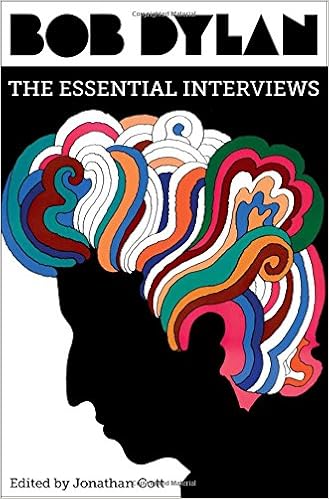
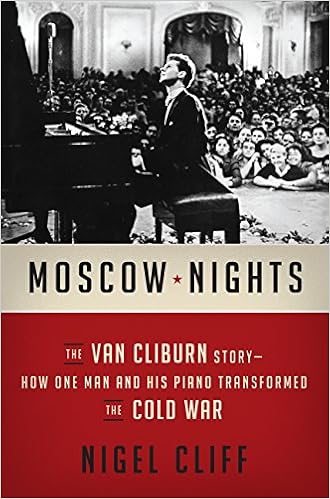 In contrast to the tensions sparked by the Bay of Pigs debacle and the Cuban Missile Crisis, Cliburn brought classical music to the masses. Elegantly combining the political and the personal, this narrative provides a fresh perspective on the Cold War and its implicit nuclear threat while telling the whole of Van Cliburn’s story for the first time.
In contrast to the tensions sparked by the Bay of Pigs debacle and the Cuban Missile Crisis, Cliburn brought classical music to the masses. Elegantly combining the political and the personal, this narrative provides a fresh perspective on the Cold War and its implicit nuclear threat while telling the whole of Van Cliburn’s story for the first time.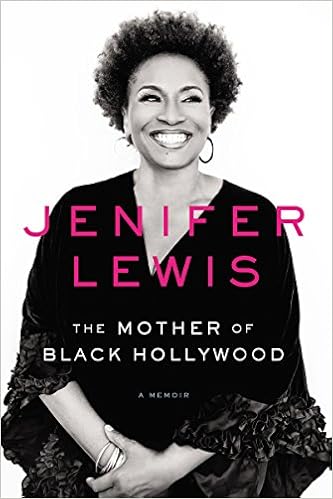 In the audaciously honest voice that her fans adore, Lewis describes her transition to Hollywood; when an undiagnosed mental illness stymies her career (culminating in a breakdown while filming The Temptations), her quest for wholeness becomes a harrowing and inspiring tale, including revelations of bipolar disorder and sex addiction.
In the audaciously honest voice that her fans adore, Lewis describes her transition to Hollywood; when an undiagnosed mental illness stymies her career (culminating in a breakdown while filming The Temptations), her quest for wholeness becomes a harrowing and inspiring tale, including revelations of bipolar disorder and sex addiction. influence that shaped the incredible Beatles phenomenon vividly to life. Hunter and his team have also rated entries to show how important, influential or meaningful that characteristic was in the history of their lives and creations. Illustrated with material from Hunter’s remarkable private collection of personal artifacts and memorabilia, this compendium is an beautiful, insightful and entertaining treasure for any Beatles fan.
influence that shaped the incredible Beatles phenomenon vividly to life. Hunter and his team have also rated entries to show how important, influential or meaningful that characteristic was in the history of their lives and creations. Illustrated with material from Hunter’s remarkable private collection of personal artifacts and memorabilia, this compendium is an beautiful, insightful and entertaining treasure for any Beatles fan. He remains the ultimate guy’s guy. The Life Steve McQueen (Motorbooks, $30) explores and celebrates the memorable aspects of McQueen’s life that, taken as a whole, defined the man and cemented his reputation as a Hollywood rebel and risk taker. Peppered with period photos, illustrations, posters and more, the book surveys the movie roles, racing, personal style, art, and pop culture that all combined to crown the King of Cool and ensure his legacy.
He remains the ultimate guy’s guy. The Life Steve McQueen (Motorbooks, $30) explores and celebrates the memorable aspects of McQueen’s life that, taken as a whole, defined the man and cemented his reputation as a Hollywood rebel and risk taker. Peppered with period photos, illustrations, posters and more, the book surveys the movie roles, racing, personal style, art, and pop culture that all combined to crown the King of Cool and ensure his legacy. Under the direction of Sir Peter Jackson, their extraordinary efforts to adapt J.R.R. Tolkien’s The Lord of the Rings and The Hobbit generated almost 24 hours of cinematic wonder, and transported audiences to a world of astonishing beauty and power. For the first time ever, that epic story is found within the pages of Middle-Earth: From Script to Screen (Harper Design, $75). Richly illustrated with thousands of film frames, concept art and behind-the-scenes imagery (many previously unseen), the tome follows in the footsteps of the Fellowship of the Ring and the Company of Thorin Oakenshield, visiting the realms and landscapes of Middle-earth and uncovering their secrets. Accompanying this stunning gallery, cast and crew reflect upon their experiences, share brand-new stories and insights into how the wildernesses and soundstages of New Zealand were transformed into a magical world of hobbits, Dwarves and Elves, resulting in one of the most spectacular achievements in cinematic history.
Under the direction of Sir Peter Jackson, their extraordinary efforts to adapt J.R.R. Tolkien’s The Lord of the Rings and The Hobbit generated almost 24 hours of cinematic wonder, and transported audiences to a world of astonishing beauty and power. For the first time ever, that epic story is found within the pages of Middle-Earth: From Script to Screen (Harper Design, $75). Richly illustrated with thousands of film frames, concept art and behind-the-scenes imagery (many previously unseen), the tome follows in the footsteps of the Fellowship of the Ring and the Company of Thorin Oakenshield, visiting the realms and landscapes of Middle-earth and uncovering their secrets. Accompanying this stunning gallery, cast and crew reflect upon their experiences, share brand-new stories and insights into how the wildernesses and soundstages of New Zealand were transformed into a magical world of hobbits, Dwarves and Elves, resulting in one of the most spectacular achievements in cinematic history. His recollections about himself and fellow band members Freddie Mercury, Roger Taylor and John Deacon, are shared for the first time. Images were taken on stage and behind-the-scenes, including informal shots taken on the road and during leisure time. Mercury, shy and fiercely protective of his privacy, interacted playfully and comfortably with May’s camera. Bonus! The book has a lenticular 3-D front cover!
His recollections about himself and fellow band members Freddie Mercury, Roger Taylor and John Deacon, are shared for the first time. Images were taken on stage and behind-the-scenes, including informal shots taken on the road and during leisure time. Mercury, shy and fiercely protective of his privacy, interacted playfully and comfortably with May’s camera. Bonus! The book has a lenticular 3-D front cover! In Androgyne (Thames & Hudson, $60), Patrick Mauries presents a cultural history of androgyny―accompanied by a striking selection of more than 120 images, from nineteenth-century painting to contemporary fashion photography―drawing on the worlds of art and literature to give us a deeper understanding of the strange but timeless human drive to escape from defined categories. What a trip!
In Androgyne (Thames & Hudson, $60), Patrick Mauries presents a cultural history of androgyny―accompanied by a striking selection of more than 120 images, from nineteenth-century painting to contemporary fashion photography―drawing on the worlds of art and literature to give us a deeper understanding of the strange but timeless human drive to escape from defined categories. What a trip! There are 65 full-color paintings and drawings, as well as 22 photographs; proceeds from the book are donated to charities and programs that are dedicated to ending animal suffering and cruelty.
There are 65 full-color paintings and drawings, as well as 22 photographs; proceeds from the book are donated to charities and programs that are dedicated to ending animal suffering and cruelty. All were captured by state-of-the-art equipment and are truly the most beautiful dog pictures you have ever seen. Firefly Books gives a portion of the profits from sales of the tome to dog rescue. The cat’s meow!
All were captured by state-of-the-art equipment and are truly the most beautiful dog pictures you have ever seen. Firefly Books gives a portion of the profits from sales of the tome to dog rescue. The cat’s meow! Witness the stunning gallery of more than 400 prized and rare photographs and illustrations—precious childhood snapshots; previously unpublished Edith Head and Helen Rose wardrobe sketches; original portraits; scene stills; on-set candids; wardrobe test shots; vintage magazine covers; and rare reproductions of exhibitor’s showmanship manuals showing how film studios marketed Grace Kelly as a star.
Witness the stunning gallery of more than 400 prized and rare photographs and illustrations—precious childhood snapshots; previously unpublished Edith Head and Helen Rose wardrobe sketches; original portraits; scene stills; on-set candids; wardrobe test shots; vintage magazine covers; and rare reproductions of exhibitor’s showmanship manuals showing how film studios marketed Grace Kelly as a star. From sit-downs with Richard Nixon in 1968 (in which he promised “to restore respect to the presidency”) and Bill Clinton in 1992 (after the first revelations of infidelity) to landmark investigations into the tobacco industry, Lance Armstrong’s doping, and the torture of prisoners in Abu-Ghraib, the broadcast has not just reported on our world but changed it too. Executive Producer Jeff Fager pulls back the curtain on how and shares the secret of what’s made the nation’s favorite TV program exceptional for all these years.
From sit-downs with Richard Nixon in 1968 (in which he promised “to restore respect to the presidency”) and Bill Clinton in 1992 (after the first revelations of infidelity) to landmark investigations into the tobacco industry, Lance Armstrong’s doping, and the torture of prisoners in Abu-Ghraib, the broadcast has not just reported on our world but changed it too. Executive Producer Jeff Fager pulls back the curtain on how and shares the secret of what’s made the nation’s favorite TV program exceptional for all these years. vehicles, the passing throngs, isolated figures, curious eccentrics, odd corners, windows, doorways, alleyways, squares, avenues, storefronts, uptown and downtown, from the Brooklyn Bridge to Harlem. Published on the occasion of the exhibition Todd Webb’s New York at the Museum of the City of New York, where Webb had his first solo exhibition in 1946. Stunning!
vehicles, the passing throngs, isolated figures, curious eccentrics, odd corners, windows, doorways, alleyways, squares, avenues, storefronts, uptown and downtown, from the Brooklyn Bridge to Harlem. Published on the occasion of the exhibition Todd Webb’s New York at the Museum of the City of New York, where Webb had his first solo exhibition in 1946. Stunning! Pinewood Studios and Shepperton Studios have played host to the greatest and most cherished movies of all time. Complete with many exclusive behind-the-scenes images from those classic movies, Pinewood: The Story of an Iconic Studio (Random House, $65,) offers insight, anecdotes and interviews with some of the producers, directors and acting talent who have worked at the studios.
Pinewood Studios and Shepperton Studios have played host to the greatest and most cherished movies of all time. Complete with many exclusive behind-the-scenes images from those classic movies, Pinewood: The Story of an Iconic Studio (Random House, $65,) offers insight, anecdotes and interviews with some of the producers, directors and acting talent who have worked at the studios. Additional chapters show both the breadth of his instincts and style in works on figures, landscapes, animal paintings and sculptures. Wood himself provides the captions and insight into the thought and motivation behind each piece.
Additional chapters show both the breadth of his instincts and style in works on figures, landscapes, animal paintings and sculptures. Wood himself provides the captions and insight into the thought and motivation behind each piece. and of a New York City institution as well. This huge gem is packed with behind-the-scenes stories from New York’s writers, editors, designers, and journalistic subjects—and frequently overflows its own pages onto spectacular fold-outs.
and of a New York City institution as well. This huge gem is packed with behind-the-scenes stories from New York’s writers, editors, designers, and journalistic subjects—and frequently overflows its own pages onto spectacular fold-outs. Readers learn of his absorption with the appropriation and abstraction of images taken from Cézanne, Grünewald, Picasso and others, and discover the inspiration Johns finds in his immediate surroundings.
Readers learn of his absorption with the appropriation and abstraction of images taken from Cézanne, Grünewald, Picasso and others, and discover the inspiration Johns finds in his immediate surroundings. Stunning color photographs featuring new and vintage versions and compelling stories capture the allure of the Airstream and offer advice and insight on the practicalities of adopting this lifestyle. All together now: On the road again . . .
Stunning color photographs featuring new and vintage versions and compelling stories capture the allure of the Airstream and offer advice and insight on the practicalities of adopting this lifestyle. All together now: On the road again . . . Thanks to his familiarity with Hubble’s history and discoveries and his access to top Hubble scientists for insight and accuracy, the text includes facts and tidbits not found in any other book.
Thanks to his familiarity with Hubble’s history and discoveries and his access to top Hubble scientists for insight and accuracy, the text includes facts and tidbits not found in any other book. into the field for an intimate meet with 90 species of cetaceans that make their homes in the world’s oceans.
into the field for an intimate meet with 90 species of cetaceans that make their homes in the world’s oceans. Extended captions with date, photographers, designer and model place the gowns and the models in the history of couture and fashion photography. Know the cover girl?
Extended captions with date, photographers, designer and model place the gowns and the models in the history of couture and fashion photography. Know the cover girl? This book presents the California part in stunning color, a testament to why it receives the most domestic visitors of all the states, and is consistently one of the top three states visited by international travelers. Highway 1 California closes with four detailed road maps that mark the sections of the book so that readers can find sights they would like to visit while traveling on Highway 1.
This book presents the California part in stunning color, a testament to why it receives the most domestic visitors of all the states, and is consistently one of the top three states visited by international travelers. Highway 1 California closes with four detailed road maps that mark the sections of the book so that readers can find sights they would like to visit while traveling on Highway 1. Focusing on four key species—great white, whitetip, tiger and mako sharks—the photographs span from Skerry’s early work, photographing them from cages, to his recent unencumbered scuba dives. With additional text by National Geographic writers, Skerry’s images and stories encourage a change in attitude toward these top predators.
Focusing on four key species—great white, whitetip, tiger and mako sharks—the photographs span from Skerry’s early work, photographing them from cages, to his recent unencumbered scuba dives. With additional text by National Geographic writers, Skerry’s images and stories encourage a change in attitude toward these top predators. Officially licensed with Chevrolet and created with their full cooperation for imagery as well as interviews with key figures involved with today’s truck program, this thorough history covers the full array of Chevy models since 1917 and is a must have for any truck fan whose heart beats with a V-8 rhythm.
Officially licensed with Chevrolet and created with their full cooperation for imagery as well as interviews with key figures involved with today’s truck program, this thorough history covers the full array of Chevy models since 1917 and is a must have for any truck fan whose heart beats with a V-8 rhythm. Because the company pioneered the use of lightweight unibody technology, it had the stiffest, lightest bodies in which to put those most powerful engines, and that is the basic muscle-car formula: Add one powerful engine to one light car
Because the company pioneered the use of lightweight unibody technology, it had the stiffest, lightest bodies in which to put those most powerful engines, and that is the basic muscle-car formula: Add one powerful engine to one light car The book covers the entire production history of Chevrolet’s iconic muscle car, from the original concept car (codenamed Panther) to the latest and greatest sixth-generation vehicle. The Complete Book of Chevrolet Camaro showcases every model of Camaro since 1967 in stunning detail, using original and GM archival photography as well as insider interviews and technical specifications.
The book covers the entire production history of Chevrolet’s iconic muscle car, from the original concept car (codenamed Panther) to the latest and greatest sixth-generation vehicle. The Complete Book of Chevrolet Camaro showcases every model of Camaro since 1967 in stunning detail, using original and GM archival photography as well as insider interviews and technical specifications. The book brings you closer to the action than ever before with Shelby himself as he creates his iconic speed machines. Prepare for a ride like none other.
The book brings you closer to the action than ever before with Shelby himself as he creates his iconic speed machines. Prepare for a ride like none other. Stylish design, lavish illustration and meticulously researched text come together in this large-format book to create a superb celebration of the 70th anniversary of DB Aston Martins in 2017.
Stylish design, lavish illustration and meticulously researched text come together in this large-format book to create a superb celebration of the 70th anniversary of DB Aston Martins in 2017. Beautiful, contemporary, photos and rare historical images accompany in-depth analyses of milestone cars and events.
Beautiful, contemporary, photos and rare historical images accompany in-depth analyses of milestone cars and events. From the backwoods of Grabtown, North Carolina to the bullfighting rings of Spain, from the MGM backlot to the Rome of La Dolce Vita, this lavishly illustrated biography takes readers on the exciting journey of a life lived to the fullest and through four decades of film history with an iconic star.
From the backwoods of Grabtown, North Carolina to the bullfighting rings of Spain, from the MGM backlot to the Rome of La Dolce Vita, this lavishly illustrated biography takes readers on the exciting journey of a life lived to the fullest and through four decades of film history with an iconic star. is much more than just a history of great designers. This fascinating book demonstrates that the success of Paris ultimately rests on the strength of its fashion culture–created by a host of fashion performers and spectators, including actresses, dandies, milliners, artists and writers.
is much more than just a history of great designers. This fascinating book demonstrates that the success of Paris ultimately rests on the strength of its fashion culture–created by a host of fashion performers and spectators, including actresses, dandies, milliners, artists and writers. The years and the struggles seem to vanish when she sings; her face lights up. Later that same year, Dantzic photographed her in color at the second New York Jazz Festival at Randall’s Island. Only a handful of the photographs in the book have ever been published. In her text, Zadie Smith evokes Lady Day herself and shows us what she sees as she inhabits these images and reveals what she is thinking.
The years and the struggles seem to vanish when she sings; her face lights up. Later that same year, Dantzic photographed her in color at the second New York Jazz Festival at Randall’s Island. Only a handful of the photographs in the book have ever been published. In her text, Zadie Smith evokes Lady Day herself and shows us what she sees as she inhabits these images and reveals what she is thinking.
